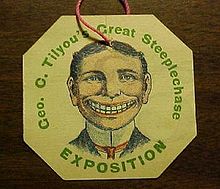
Coney Island is a neighborhood and entertainment area in the southwestern section of the New York City borough of Brooklyn. The neighborhood is bounded by Brighton Beach to its east, Lower New York Bay to the south and west, and Gravesend to the north and includes the subsection of Sea Gate on its west. More broadly, the Coney Island peninsula consists of Coney Island proper, Brighton Beach, and Manhattan Beach. This was formerly the westernmost of the Outer Barrier islands on the southern shore of Long Island, but in the early 20th century it became connected to the rest of Long Island by land fill.

Tillie is the nickname of two murals of a grinning figure that were painted on the side of the Palace Amusements building in Asbury Park, New Jersey, United States. Tillie is an amusement park "fun face", painted during the winter of 1955–1956. The name Tillie is likely a nod to George C. Tilyou, owner of Steeplechase Park in Coney Island, New York, which featured the Steeplechase Face, similar grinning face signage.

Luna Park was an amusement park that operated in the Coney Island neighborhood of Brooklyn in New York City, United States, from 1903 to 1944. The park was located on a site bounded by Surf Avenue to the south, West 8th Street to the east, Neptune Avenue to the north, and West 12th Street to the west. Luna Park was located partly on the grounds of the small park it replaced, Sea Lion Park, which operated between 1895 and 1902. It was the second of the three original, very large, iconic parks built on Coney Island; the others were Steeplechase Park and Dreamland. At Coney Island's peak in the middle of the 20th century's first decade, the three amusement parks competed with each other and with many independent amusements.

Steeplechase Park was an amusement park that operated in the Coney Island neighborhood of Brooklyn in New York City, United States, from 1897 to 1964. Steeplechase Park was created by the entrepreneur George C. Tilyou as the first of the three large amusement parks built on Coney Island, the other two being Luna Park (1903) and Dreamland (1904). Of the three, Steeplechase was the longest-lasting, running for 67 years.

Frederick Christ Trump Sr. was an American real-estate developer and businessman. He was the father of the 45th and 47th (presumptive) U.S. president, Donald Trump.
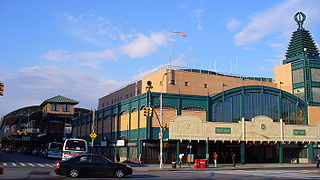
The Coney Island–Stillwell Avenue station is a New York City Subway terminal in Coney Island, Brooklyn. It is the railroad-south terminus for the D, F, N, and Q trains at all times and for the <F> train during rush hours in the peak direction.

The Cyclone, also called the Coney Island Cyclone, is a wooden roller coaster at Luna Park in the Coney Island neighborhood of Brooklyn in New York City. Designed by Vernon Keenan, it opened to the public on June 26, 1927. The roller coaster is on a plot of land at the intersection of Surf Avenue and West 10th Street. The Cyclone reaches a maximum speed of 60 miles per hour (97 km/h) and has a total track length of 2,640 feet (800 m), with a maximum height of 85 feet (26 m).
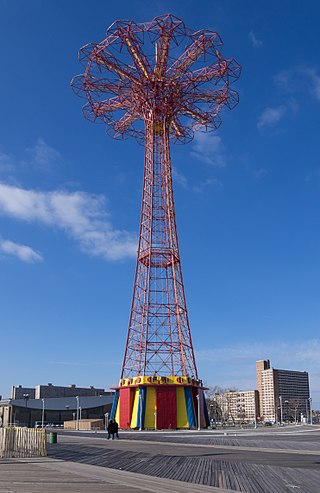
The Parachute Jump is a defunct amusement ride and a landmark in the New York City borough of Brooklyn, along the Riegelmann Boardwalk at Coney Island. Situated in Steeplechase Plaza near the B&B Carousell, the structure consists of a 250-foot-tall (76 m), 170-short-ton (150 t) open-frame, steel parachute tower. Twelve cantilever steel arms radiate from the top of the tower; when the ride was in operation, each arm supported a parachute attached to a lift rope and a set of guide cables. Riders were belted into a two-person canvas seat, lifted to the top, and dropped. The parachute and shock absorbers at the bottom would slow their descent.

Culver Depot, also called Culver Terminal or Culver Plaza, was a railroad and streetcar terminal in Coney Island, Brooklyn, New York City, United States, located on the northern side of Surf Avenue near West 5th Street. It was just north of the boardwalk, near the former Luna Park amusement complex, and across from the current New York Aquarium. Originally built by the Prospect Park and Coney Island Railroad for the Culver surface line, it later became a major terminal for the Brooklyn Rapid Transit Company (BRT).
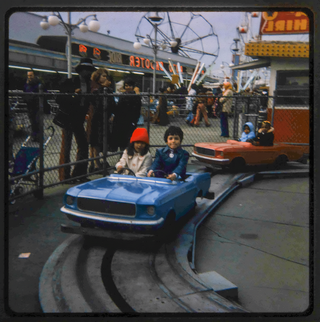
Rockaways' Playland was an amusement park that operated from 1902 to 1987 in Rockaway Beach in Queens, New York City. Bounded by Beach 97th and Beach 98th Streets between Rockaway Beach Boulevard and the Rockaway Beach and Boardwalk, Rockaways' Playland was created in 1902 by roller coaster designer LaMarcus Adna Thompson. By 1903 a ferry dock was added not far from the park, making it more convenient to reach than some of the competing amusement parks. The park was sold in 1927 to Robert Katlin, who added amenities such as a gym and swimming pool, and the following year to A. Joseph Geist, who achieved greater success than the previous owners. Between 1928 and 1970, Rockaways' Playland was extremely successful, drawing 175 million visitors. It closed in 1987 due to a sharp increase in the price of insurance.
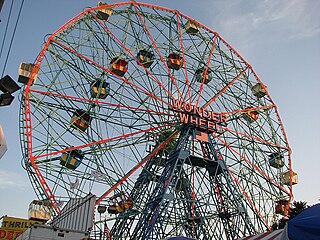
The Wonder Wheel is a 150-foot-tall (46 m) eccentric Ferris wheel at Deno's Wonder Wheel Amusement Park at Coney Island in the New York City borough of Brooklyn. The wheel is located on a plot bounded by West 12th Street to the west, Bowery Street to the north, Luna Park to the east, and the Riegelmann Boardwalk to the south. As with other eccentric Ferris wheels, some of the Wonder Wheel's passenger cabins are not fixed directly to the rim of the wheel, but instead slide along winding sets of rails between the hub and the rim.

The Riegelmann Boardwalk is a 2.7-mile-long (4.3 km) boardwalk on the southern shore of the Coney Island peninsula in Brooklyn, New York City, United States. Opened in 1923, the boardwalk runs along the Atlantic Ocean between West 37th Street to the west, at the edge of the Sea Gate neighborhood, and Brighton 15th Street to the east, in Brighton Beach. It is operated by the New York City Department of Parks and Recreation.

Luna Park is an amusement park in Coney Island, Brooklyn, New York City. It opened on May 29, 2010, at the site of Astroland, an amusement park that had been in operation from 1962 to 2008, and Dreamland, which operated at the same site for the 2009 season. It was named after the original 1903 Luna Park which operated until 1944 on a site just north of the current park's 1000 Surf Avenue location.
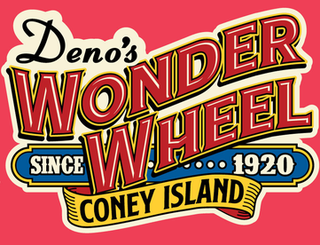
Deno's Wonder Wheel Amusement Park is a family-owned amusement park located at Coney Island, Brooklyn, New York City. It features six adult rides and 16 kiddie rides, including a dozen family rides that parents and children can ride together. The park is named for its main attraction, the Wonder Wheel, a 150-foot (46 m) eccentric wheel built in 1920.
Coney Island is a 1991 documentary film that traces the history of Coney Island, the westernmost part of the barrier islands of Long Island, New York. The film covers the island's 1609 discovery by Henry Hudson, its 1870s incarnation as a respectable beach destination for city-dwellers and a showcase of the new developments ushered in by the machine age, the early 20th century, when amusement parks and innovative attractions attracted hundreds of thousands of people each day, and the gradual demise of the amusements.
Philomena Marano is an American artist specializing in papier collé.

Frederic Williams Thompson was an American architect, engineer, inventor, and showman known for creating amusement rides and one of the first large amusement parks.

Elmer Scipio "Skip" Dundy Jr. was an American showman and promoter known for creating amusement rides and one of the first large amusement parks.
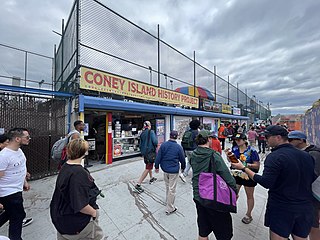
The Coney Island History Project, or CIHP, founded in 2004, is a 501(c)(3) nonprofit organization that works to record and increase awareness of Coney Island's history.
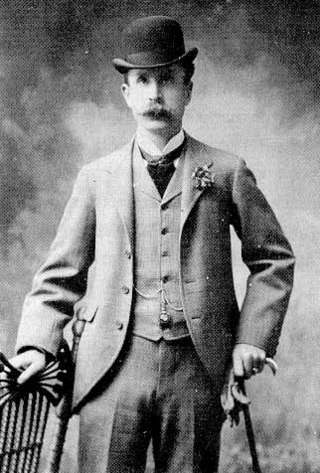
George Cornelius Tilyou (1862–1914) was an American entrepreneur and showman who founded New York City's Steeplechase Park. Born in New York City, his parents had operated businesses in Coney Island from his early childhood. He founded Steeplechase in 1897, and rebuilt it entirely after a 1907 fire. Tilyou died in 1914, leaving the park to his children, who continued to operate it until 1964.
